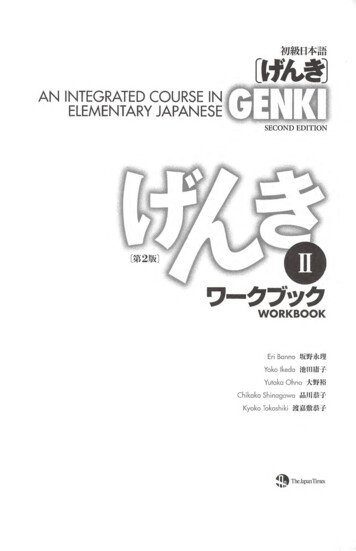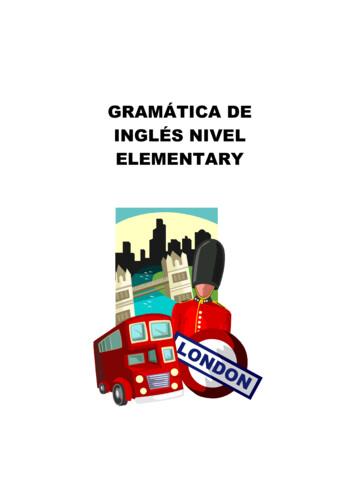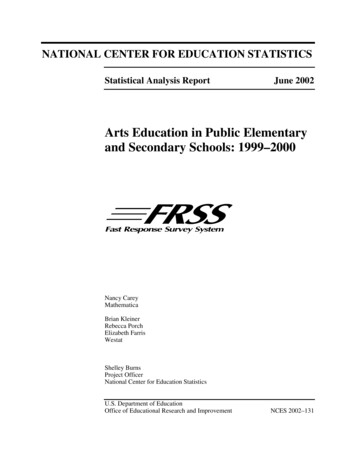
Transcription
NATIONAL CENTER FOR EDUCATION STATISTICSStatistical Analysis ReportJune 2002Arts Education in Public Elementaryand Secondary Schools: 1999–2000Nancy CareyMathematicaBrian KleinerRebecca PorchElizabeth FarrisWestatShelley BurnsProject OfficerNational Center for Education StatisticsU.S. Department of EducationOffice of Educational Research and ImprovementNCES 2002–131
U.S. Department of EducationRod PaigeSecretaryOffice of Educational Research and ImprovementGrover J. WhitehurstAssistant SecretaryNational Center for Education StatisticsGary W. PhillipsDeputy CommissionerThe National Center for Education Statistics (NCES) is the primary federal entity for collecting, analyzing,and reporting data related to education in the United States and other nations. It fulfills a congressionalmandate to collect, collate, analyze, and report full and complete statistics on the condition of education inthe United States; conduct and publish reports and specialized analyses of the meaning and significanceof such statistics; assist state and local education agencies in improving their statistical systems; andreview and report on education activities in foreign countries.NCES activities are designed to address high priority education data needs; provide consistent, reliable,complete, and accurate indicators of education status and trends; and report timely, useful, and highquality data to the U.S. Department of Education, the Congress, the states, other education policymakers,practitioners, data users, and the general public.We strive to make our products available in a variety of formats and in language that is appropriate to avariety of audiences. You, as our customer, are the best judge of our success in communicatinginformation effectively. If you have any comments or suggestions about this or any other NCES productor report, we would like to hear from you. Please direct your comments to:National Center for Education StatisticsOffice of Educational Research and ImprovementU.S. Department of Education1990 K Street, NW Suite 900Washington, DC 20006-5650June 2002The NCES World Wide Web Home Page is: http://nces.ed.govThe NCES World Wide Web Electronic Catalog is: http://nces.ed.gov/pubsearchSuggested CitationU.S. Department of Education, National Center for Education Statistics. Arts Education in PublicElementary and Secondary Schools, 1999–2000. NCES 2002–131, by Nancy Carey, Brian Kleiner,Rebecca Porch, and Elizabeth Farris. Project Officer: Shelley Burns. Washington, DC: 2002.Contact:Shelley Burns(202) 502-7319email: Shelley.Burns@ed.gov
EXECUTIVE SUMMARYbased on questionnaire data from 640 publicelementary school principals and 686 publicsecondary school principals (or their designatedrespondents). The elementary school teacherfindings are based on data collected from 453music specialists, 331 visual arts specialists, and497 regular classroom teachers. The responses tothe school questionnaires were weighted toproduce national estimates that represent allregular public elementary and secondary schoolsin the United States; those for the teacher surveyswere weighted to produce national estimates thatrepresent all regular elementary school classroomteachers, music specialists, and visual artsspecialists.BackgroundDuring the last decade, arts instruction hasreceived increasing attention as an importantaspect of education. The Improving America'sSchools Act of 1994 (U.S. Public Law 103-382),and the release of the voluntary NationalStandards for Arts Education (Consortium ofNational Arts Education Association 1994),demonstrated this increase in attention. By 1998,there were no national data sources thatspecifically addressed the condition of artseducation in the nation’s public schools. To fillthis data gap, the National Endowment for theArts, the Office of Educational Research andImprovement (OERI), and the Office of ReformAssistance and Dissemination (ORAD) of OERIrequested that surveys be conducted under the FastResponse Survey System (FRSS) of the NationalCenter for Education Statistics (NCES) of the U.S.Department of Education. The purpose of thisreport is to provide a national profile of the statusof arts education in the nation’s regular1 publicschools during the 1999–2000 school year.Specifically, this report presents information onthe characteristics of public elementary andsecondary school arts education programs,including data on the availability of instruction inthe arts, staffing, funding, supplemental programsand activities, and administrative support of artseducation.Key FindingsArts Education in Public Elementary SchoolsThe elementary school survey addressed a varietyof topics regarding characteristics of arts educationprograms in public elementary schools during the1999–2000 school year. In 1999–2000, musicinstruction and visual arts instruction wereavailable in most of the nation’s public elementaryschools (94 and 87 percent, respectively). Danceand drama/theatre were available in less than onethird of elementary schools (20 and 19 percent,respectively). Results of the elementary schoolsurvey also indicate that:This report is based on data that were collectedfrom elementary and secondary school principalsand from elementary school arts specialists andclassroom teachers during the 1999–2000 schoolyear. The teacher-level component provides dataon the educational backgrounds and experience ofarts teachers and the curricula and learningenvironments that characterize arts education. Theschool-level results presented in this report are1 Regular school is defined as a public elementary/secondary schoolthat does not focus primarily on vocational, special, or alternativeeducation.iiiOverall, 72 percent of elementary schools thatoffered music instruction and 55 percent ofelementary schools that offered visual artsinstruction employed full-time specialists toteach these subjects. Full-time specialists indance were employed by 24 percent ofelementary schools that offered this subject,and full-time specialists in drama/theatre wereemployed by 16 percent of elementary schoolsthat offered it.
art rooms with special equipment. Of theschools that offered dance, 41 percentprovided dedicated dance spaces with specialequipment, and of those that offereddrama/theatre, 53 percent provided dedicatedtheatre spaces with special equipment.Sixty-seven percent of elementary schools thatoffered music had dedicated rooms withspecial equipment for instruction in thissubject. Of the schools that offered visualarts, 56 percent had dedicated rooms withspecialequipmentforvisualarts.Fourteen percent of elementary schools thatoffered dance had dedicated rooms withspecial equipment for dance instruction, and13 percent of schools with drama/theatre haddedicated rooms with special equipment forthis subject. Seventy-seven percent of regular publicelementary schools sponsored field trips toarts performances during the 1998–99 schoolyear, and 65 percent sponsored field trips toart galleries or museums. Thirty-eight percentsponsoredvisitingartists,22 percentsponsored artists-in-residence, and 51 percentof public elementary schools sponsored afterschool activities that included the arts duringthe 1998–99 school year.Elementary Music Specialists, Visual ArtsSpecialists, and Self-Contained ClassroomTeachersThe teacher surveys gathered information relatedto the preparation, working environments, andinstructional practices of public elementary schoolmusic and visual arts specialists and non-artsclassroom teachers. Results from the three teachersurveys indicate that:Arts Education in Public Secondary SchoolsMusic and visual arts instruction were offered inmost of the nation’s public secondary schools (90and 93 percent, respectively) in 1999–2000.Dance and drama/theatre instruction were lesscommonly offered within secondary schools (14and 48 percent, respectively).Further, thesecondary school survey indicates that: Field trips to arts performances weresponsored by 69 percent of regular publicsecondary schools during the 1998–99 schoolyear, and 68 percent sponsored field trips toart galleries or museums. Thirty-four percentof secondary schools sponsored visitingartists, 18 percent sponsored artists-inresidence, and 73 percent sponsored afterschool activities in the arts during the 1998–99school year.Most public secondary schools that offeredmusic, visual arts, dance, and drama/theatreemployed full-time specialists to teach thesesubjects, with 91 percent reporting one ormore full-time music specialists, 94 percentreporting one or more full-time visual artsspecialists, 77 percent reporting one or morefull-time dance specialists, and 84 percentreporting one or more full-time drama/theatrespecialists.In 1999–2000, 91 percent of public secondaryschools that offered music instruction haddedicated music rooms with special equipmentfor teaching the subject, and 87 percent ofthose with visual arts instruction had dedicatediv In 1999–2000, 45 percent of music specialistsand 39 percent of visual arts specialists had amaster’s degree in their respective fields ofstudy or in a related field. Forty-five percentof regular classroom teachers had a master’sdegree. Arts specialists participated in a variety ofprofessional development activities.Forinstance, 72 percent of music specialists and79 percent of visual arts specialists reportedprofessional development activities focusingon the integration of music or visual arts intoother subject areas within the last 12 months. A sizable majority of music and visual artsspecialists felt that their participation invarious professional development activitiesfocusing on arts instruction improved theirteaching skills to a moderate or great extent(69 to 75 percent).
On a typical school day in 1999–2000, musicspecialists taught an average of six differentclasses of students. Visual arts specialiststaught on average five classes on a typicalschool day. Visual arts specialists had more time set asideeach week for planning or preparation duringthe regular school day than music specialistsand classroom teachers (4.2 hours versus 3.6and 3.4 hours, respectively). vForty-six percent of music specialists and44 percent of visual arts specialists stronglyagreed with the statement that parents supportthem in their efforts to educate their children.Fifty-eight percent of music specialists and53 percent of visual arts specialists stronglyagreed that they were supported by theadministration at their schools.
vi
Table of ContentsChapter123PageExecutive Summary .iiiIntroduction.1Arts Education: Perspectives and Approaches in U.S. Public Schools .Study Methodology .Organization of This Report.234Arts Education in Public Elementary Schools .5Highlights .Availability and Characteristics of Arts Education Programs inPublic Elementary Schools.5Availability of Arts Education Programs.Characteristics of Music Instruction .Characteristics of Visual Arts Instruction.Characteristics of Dance Instruction.Characteristics of Drama/Theatre Instruction.68172527Supplemental Arts-Related Activities in Public Elementary Schools.28Availability of Supplemental Programs and Activities .Funding Supplemental Programs and Activities .2830Administrative Support for Arts Education in Public Elementary Schools .31Mission Statements, School Goals, and Arts Reform.Status of Arts Specialists and Programs in Public Elementary Schools .3133Arts Education in Public Secondary Schools.37Highlights .Availability and Characteristics of Arts Education Programs inPublic Secondary Schools .37Availability of Arts Education Programs.Characteristics of Music Instruction .Characteristics of Visual Arts Instruction.Characteristics of Dance Instruction.Characteristics of Drama/Theatre Instruction.Creative Writing as Arts Instruction.373846535454Supplemental Arts-Related Activities in Public Secondary Schools .55Availability of Supplemental Programs and Activities .Funding Supplemental Programs and Activities .5556vii537
Table of Contents (continued)ChapterPageAdministrative Support for Arts Education in Public Secondary Schools .Status of Arts Specialists and Programs in Public Sec
school activities in the arts during the 1998–99 school year. Elementary Music Specialists, Visual Arts Specialists, and Self-Contained Classroom Teachers The teacher surveys gathered information related to the preparation, working environments, and instructional practices of public elementary school music and visual arts specialists and non-arts
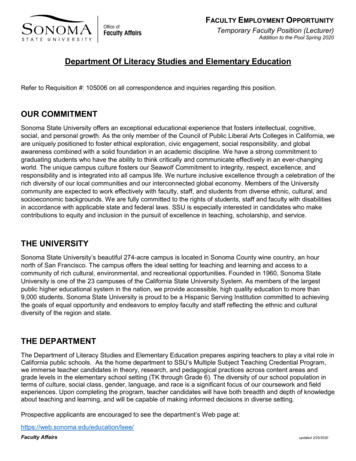

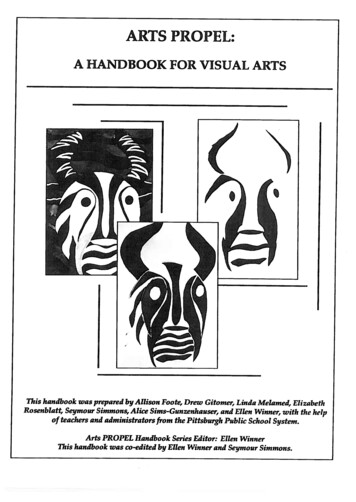
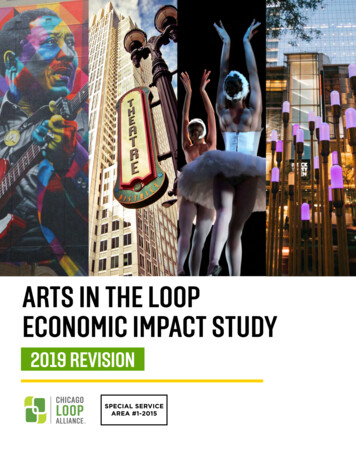
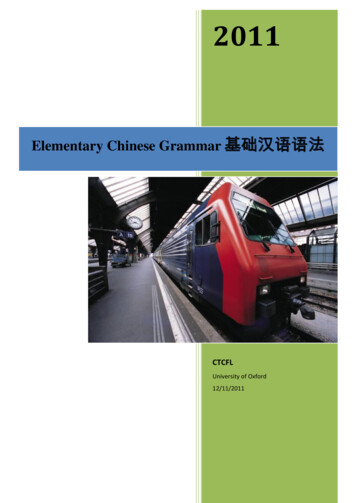
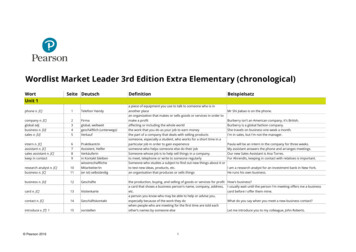
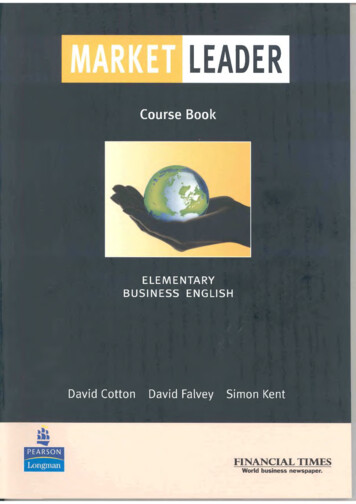
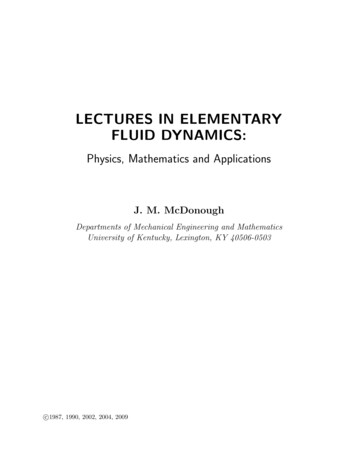
![Rubank elementary method : [for] flute or piccolo](/img/5/rubankelementary-flute.jpg)
